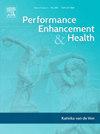哮喘患者身体活动和锻炼的障碍和促进因素:系统综述
IF 3.7
Q2 HOSPITALITY, LEISURE, SPORT & TOURISM
引用次数: 0
摘要
背景:在鼓励哮喘患者锻炼之前,了解阻碍他们锻炼的因素是至关重要的。目的:本研究的目的是分析和综合现有的研究,这些研究报告了哮喘患者运动相关的障碍和激励因素的定量和定性数据。方法系统检索自建库至2024年7月的7个电子数据库。采用乔安娜布里格斯研究所定性研究关键评估清单和横断面研究评估工具对纳入研究的方法学质量进行评估。结果共纳入13项定性研究和2项定量研究。其中,7个提供了关于运动障碍的信息,1个只关注促进因素,7个同时涉及障碍和促进因素。数据表明,哮喘患者运动的常见障碍包括缺乏时间、兴趣和对运动的全面了解。促进因素主要包括哮喘控制、获得锻炼设施和社会支持。为了克服内部障碍,建议进行动机性访谈和获得运动咨询服务。此外,教育支持是必要的,以告知患者有关运动的安全性和消除消极的信念。还应考虑建立有组织的锻炼小组,以提高参与和坚持。结论所得结果可为制定旨在增加该人群锻炼的策略提供参考。本文章由计算机程序翻译,如有差异,请以英文原文为准。
Barriers and facilitators to physical activity and exercise among individuals with asthma: a systematic review
Background
Before encouraging exercise practice among people with asthma, it is crucial to understand the factors that prevent them from exercising.
Aim
The aim of this study was to analyse and synthetize available studies that report quantitative and qualitative data on barriers and motivating factors related to exercise in people with asthma.
Methods
Seven electronic databases were searched systematically from their inception until July 2024. The methodological quality of the included studies was assessed using the Joanna Briggs Institute Critical Appraisal Checklist for Qualitative Research and Appraisal Tool for Cross-Sectional Studies.
Results
The review included 13 qualitative studies along with 2 quantitative ones. Among these, 7 provided information on barriers to exercise, 1 focused solely on facilitators, and 7 addressed both barriers and facilitators. The data indicated that common barriers to exercise among asthma patients include lack of time, interest, and overall knowledge about exercise. Facilitators primarily involve asthma control, access to exercise facilities, and social support. To overcome internal barriers, motivational interviewing and access to exercise counselling services are recommended. Additionally, educational support is necessary to inform patients about the safety of exercise and dispel negative beliefs. The creation of organized exercise groups should also be considered to enhance participation and adherence.
Conclusion
The obtained findings can be of interest for developing strategies aimed at increasing exercise practice among this population.
求助全文
通过发布文献求助,成功后即可免费获取论文全文。
去求助
来源期刊

Performance enhancement and health
Social Sciences-Health (social science)
CiteScore
4.70
自引率
0.00%
发文量
27
审稿时长
57 days
 求助内容:
求助内容: 应助结果提醒方式:
应助结果提醒方式:


